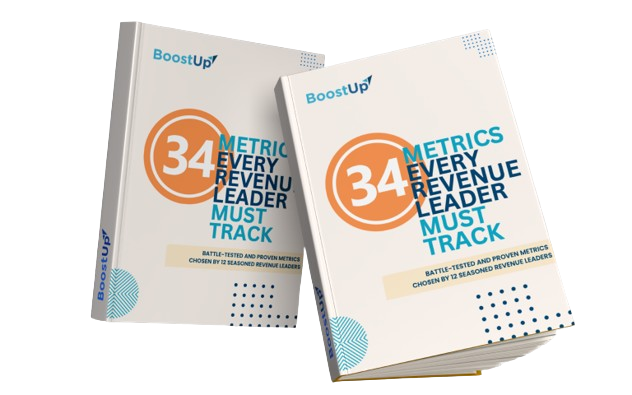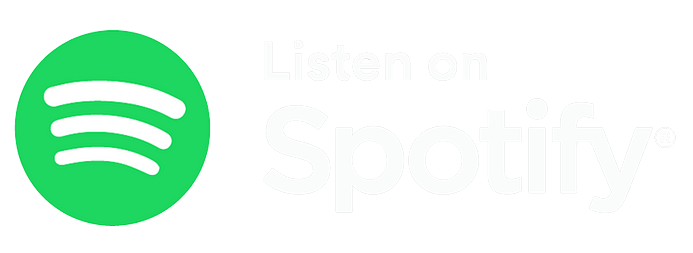Lucas is a seasoned product strategy and solutions development leader, focused on team building and process enhancement. He has extensive experience in developing teams and enabling successful partners and customers for B2B SaaS companies. He brings seven years of experience across roles in the sales org like customer success management, solution consulting, revenue operations and product management.
In this session, Lucas shares three metrics that can help sales teams make their forecasts more accurate by measuring the health of their pipeline and reducing risk.
The Metrics Discussed
- Risk Tolerance: Percentage of deals at risk in the forecastable pipeline (deals in commit and best case)
- CQ Saviors: Measuring the gap between target and actuals in current quarter with what the team pulled from next quarter to cover this gap
- Forecasting Accuracy Beyond Dollars: Percentage gap between submission and booked ARR and percentage gap between the number of deals forecasted and booked
Justin Shriber joined BoostUp as the new CEO! Read "Letter From the CEO"
About this Mavericks episode

34 Metrics From 12 Revenue Leaders [EBOOK]
Discover the metrics that top revenue leaders swear by—your secret code to identify what clicks, what misses, and why.
Key takeaways from this Mavericks episode
Improve forecast accuracy by defining risk tolerance
Establishing a clear definition of forecastable pipeline and identifying at-risk deals based on engagement metrics allows for more accurate forecasting and better risk management within sales operations.
Track forecast accuracy beyond dollar amounts
By evaluating the accuracy of individual deals included in the forecast, sales teams can gain insights into the effectiveness of their forecasting methods and make informed decisions to improve future predictions.
Stay updated on industry trends and customer interactions
Continuous learning from customer interactions and staying informed about industry trends enables revenue professionals to adapt strategies effectively, enhance their skills, and drive better outcomes in revenue operations.

Risk Tolerance
This metric plays a pivotal role in measuring pipeline health and as well as managing risk in deal outcomes. It entails defining forecastable pipeline and identifying at-risk deals based on various engagement metrics, such as recent interactions and CRM updates. Identifying deals at risk using a ranking method, and then comparing risky deals’ percentages over different quarters can be insightful. Risk tolerance can also have a target level chosen by the team as a baseline for healthy operation. Organizations can then proactively address potential challenges and mitigate uncertainties in their pipeline.

Current Quarter Saviors
The CQ Saviours metric identifies deals within the forecast that can be accelerated or pulled in from the next quarter with the assistance of upper management. It focuses on recognizing opportunities that might be at the middle or later stages like info-sec or MSA and then utilizing executive intervention or strategic actions that can expedite deal closure, thereby positively impacting the current quarter's results. The same can be done by pulling in promising deals at earlier stages from the next quarter, for example, where the economic buyer has been identified. By pinpointing these critical deals and strategizing with leadership, organizations can optimize revenue outcomes and save their quarter.

Forecast Accuracy Beyond Dollar Value
This metric offers a comprehensive approach to assessing forecast accuracy by considering factors beyond monetary figures. It involves analyzing the number of deals being forecasted and booked alongside the ARR of the same to gauge the true effectiveness of forecasting methods. This allows for understanding how many deals move in and out of forecast thereby giving more information about the true nature of forecast calls. By evaluating deal outcomes in number as well as monetary values against forecasted projections, organizations can develop a deeper forecasting method that can help them gain better insights and make their forecasts more accurate over time.

Full transcript of this Mavericks episode
Neel Kamal:
Lucas. Hello! Hello! Hello! Great To meet you here. Thank you for being a Revenue Maverick. Everyone. My name is Neel Kamal. I'm one of the founders of BoostUp and welcome to our recording for revenue maverick. I would love to introduce you to our guest, Lucas Lam. Lucas, who is the director of product solution and an expert on all the facets of revenue and revenue generation process. Please tell us a little bit about yourself.
Lucas Lam:
Thanks Neel, really excited to be here. Lucas Lam. I've been in this space for about 6-7 years now. I started off actually more on the inbound, really, at the forefront of ABM DemandGen and all the plays being built around that marketing side of things. And then, as part of that I got introduced to sales operations, sales intelligence, and for the last 4-5 years really been focusing on this evolving space of revenue operations and revenue intelligence.
So today for BoostUp, I work with all of our customers on helping them improve forecast process, sales methodology, really consulting them on how they can get the most out of their pipeline and their reps. And then I work with a lot of our customer, our prospects, our partners, on trying to help them figure out what should they be doing as an org uh with BoostUp, and in general, to get the most out of their their sales and their pipelines.
Neel Kamal:
Fantastic! Before we get on this journey, and hear from Lucas about his set of metrics and how through his experiences, he looks at the world of revenue, Let me share a little secret about Lucas, a little known secret. I've been told that Lucas has roughly 50,000 hours of experience on revenue intelligence and revenue forecasting. Is that right, Lucas?
Lucas Lam:
Yeah, I've had the benefit of being uh working with much of different vendors over my years, and being always on the post sales world.
Uh, but never really being a you know, an account facing CSM. So I've had the benefit of working across a wide number of customers over these 6 years of being in the space. Very wide range of industries sizes as well. And that's been the benefit of kind of what I've learned here, is it's not just one tech one size, It's really just kind of gamut of running business as a whole.
Neel Kamal:
That's fantastic! And the community, the revenue mavericks out there, they would love to learn from and peek into the world of experience that you have. Let's step into the program and the metrics themselves.
You know. Um, as I often say, the real heroes of all revenue production and revenue results is revenue operations team, and you work with hundreds of them. So you are, uh, very close to the challenges, the Maverism, the coolness, the smarts of these people. As you take us through the lens of this metric, please pepper in stories from your life and your learnings.
Lucas Lam:
Definitely! So just to kind of set the stage here are the 3 metrics I want to highlight. I'm choosing these mainly because of the time of the year that we're in, and I think it's really relevant to me, focusing on these types of things given what I'm seeing in the field.
Risk tolerance, CQ Saviors and defining Forecast Accuracy Beyond Dollar Value.
Neel Kamal:
I love it! I love the way you named them!
Lucas Lam:
So Risk tolerance. This one is really close to me, coming from kind of a background idea on the account based marketing side where it's really around, you know, driving engagement, having those touch points. And we all know that to have successful pipeline outcomes, especially in more complex B2B sales, you need a lot of this general activity with all these buyers and decision makers, because there's so many of them.
So the whole idea of this metric here is to come up with a common definition of what is a forecasted pipeline.
And what of that pipeline is, or is not, at risk? So as we think about this metric, the first thing is forcastable pipeline. And I choose to define that as commit and best case deals. We don't want to include that pipeline stuff, because it's a pipeline for a reason. It would have progressed forward, if it was more valid. So we're looking at what i'm probably including in my forecast call every week, and in this case we've defined at risk as having a risk, or greater than sixty, with factors, such as being touched in the last seven days by our sales team, or responding to our sales team in the last fourteen, making sure we're getting that reciprocation, having meetings every month because we found that that's a good cadence for successful outcomes, and then on the CRM side, making sure that they're updating the closed date, just so, I know the rep is thinking about the deal. And they're not leaving it stale in a stage for more than 60+ days, because we know that's a really clear indicator of the rep not managing that opportunity anymore as well.
And the big thing here is me able to compare that to what % of my pipeline was at risk last quarter, and this will help me identify those trends, those early warning indicators inside of my pipeline.
Neel Kamal:
Great so as in some ways you are, you're using a new telemetry to understand the pipeline.
And this elementary is sort of a risk based telemetry, which obviously sounds like a leading indicator. Given that you have used this in your life and through your customers' lives, what decisions have they made based on this data?
Lucas Lam:
So the biggest thing that they're trying like decision wise they want to come up with is how much can I actually tolerate here? So what they're looking at is okay last quarter, you know, this metrics really key to track week over week. So on week 8, I can see that, the overall organization, they have 42% of their pipeline at risk. And today, on week 8, we're actually 10% more risky than we were.
So at a top level, I now know things aren't healthier to start right, but I want to then figure out what's causing that change. Quarter over Quarter, and I can clearly see here, Team 2 is the major part of my business that's causing it to be more risky. I can drill down deeper, start looking at team 2 by manager, by rep, understanding where that risk is coming from.
But you also want to think about the beneficial side of tracking this metric so like team 4 here quarter over quarter, trending more healthy as well, and having less risky pipeline.
Um! But now that I know, you know how we're trending, how I performed last quarter, I can then start scrutinizing this pipeline, really understanding, Okay for team 2 here, what are those deals that are at risk? Why are they at risk? And what do we need to do to affect them?
And one of the kind of overarching goals and the customer that actually brought this to me, what they wanted to find from this is a target. So that they can say, we want to achieve this % of at risk pipeline, because we know some things are always going to be at risk. That's just the nature of deals. So as long as we're 45%, we think we're going to be okay and be able to hit our target outcomes. But you're only going to be able to create that if you start tracking it now, so that you can build that wealth of history around,
How much were we at risk? And did we actually get target in the end? Given what pipeline was looking at?
Neel Kamal:
That is actually fantastic! Because, you know, often people have competitive analysis between the teams to find out who your best sellers are, who your best performing team is?
But by the time that identification happens, a few porters have already gone by. In some ways you are trying to get to it in real time, so as to both, not only save the quarter, but also change the behavioral pattern of that team relative to other team. So this is superb!
In your opinion, what is so complex about it? Why is everybody not using risk tolerance as a metric?
Lucas Lam:
The hard part is capturing what I call natural sales activity. So we're all used to thinking about sales activity, right? But we're often forced to require reps to log that activity. So then that becomes the whole game, and that's even some fallacies, and like tracking closed date past, you or days and stage. Because if that's the risk factor definition, it is just CRM data, or what the rep is logging for me, they're going to start gaming that system, because again, that goes to the forecast side we'll get into later, and how the health of the pipeline gets scrutinized by their boss, which then leads to that forecast inpredictability, right?
So the big thing here is not forcing the rep to log activity, because that's not what their job is to do. Their job is to engage buyers and to go have conversations that lead to to good outcomes. Right? So let them go focus on that.
Do the activity, tracking with the tool in the background that's matching emails and calendar events to their accounts and opportunities. And then you can come up with these really nice metrics around, hey historically, when we could hit target for all of our opportunities for this rep, we engage every week or every 5 days. Let's now define that as a risk metric
But again, if you don't know and can't capture activity in the first place, you can't even start thinking about real risk versus just CRM risk.
Neel Kamal:
This is actually really great, because I'm thinking, you know, as a marketing team, they would start having this tolerance defined based on lead sources, right? An event based leads will have maybe more risk, versus something which is more webinar based, or versus something that you paid a lot of money to get.
And and that risk tolerance would propel people to take action. And one action could be sales team, as you're pointing out, but the other action could be that this particular lead source is just not very good.
Lucas Lam:
I'm highlighting this here around like pipeline, right? Because we're in Q4 for the most part, so we're really trying to manage toward the end of your targeting. At the same time, this is mainly for the sales folks, right? The guys who are managing those deals.
But if I think about my operations customers that I'm working with. We're actually doing the same "At-risk" definition, but at the account level. And for their prospect accounts we start planning for next year. So as they're looking at recovering their territories, redoing their target account segmentation for the marketing team and working with them on that part of it, the same metrics are really relevant. Well, if we've had marketing inbound leads, we're not getting reciprocation from those people that we've sourced, is this an SDR problem?
Is this the play problem? With how we're actually having them engage those leads that we have brought in? So this same wealth of data around tracking what's at risk? what is active or being engaged? Definitely relevant, as we think about next year, planning as well.
Neel Kamal:
Fantastic! This is wonderful! Let's take us to your next metrics and the wealth of experience there.
Lucas Lam:
So we now understand, how we are trending from a risk perspective? Are we healthy or unhealthy? And we know that, given where our pipeline is at, we have about a 100K gap to our current quarter target, right? So then there's two questions from that. First one is - do I have enough pipeline in the current quarter that still could be created, based on what I'm seeing in top of funnel on the inbound side that could cover me?
But really, especially if you think of like Q4, and you're not going to build a ton of pipeline mid November through end of December, and close it probably with the holidays and everything… you're probably needing to look to next quarter, to cover any remaining gap you have.
And I really like this play and thinking about it in a different way every quarter, because we all know the seasonality of different deals, and how it will change, depending on how you transact with your buyers… but the main thing here is to think about what our deals that could be in the future that have the right qualification that I may want to pull in?
So these are going to be deals that are in a later stage - the buyers have been engaged more recently, like last seven days last five days. I like sales process here because this is where we can identify… do we have the economic buyer? decision maker? If we have all the people, we've gone through infosec maybe… we've done the MSA things, or are at least in progress there.
Well, then, it's more probably a pricing discussion. Or maybe we just don't have that right executive person coming in over the top to get this over the line. And if we can identify where all the process things are happening, where they're happy and engaged, that's really where upper sales leadership, executive team come help out a rep, pull these deals in, and really save our our quarter our year potentially, by covering any remaining gaps we have.
Neel Kamal:
Yeah, that's a very good point. That's very timely. Um given the macro-economic climate, and what's gonna happen with Q4 everybody will look for ways to get to a stable ground and this is a very, very powerful plot to help those sales leaders.
Lucas Lam:
One thing I do want to call out with this, though. Um, it's great to identify these and have a whole workflow for pulling in your Saviors. But you also have to think of the impact that's going to have on your next quarter coverage as well, right? Are you potentially pulling in too much to just focus on Cq. Where you're eroding your next quarter coverage, and you're never going to catch up anyway?
You're basically kicking the can on the road and and just extending your problem. So it's really important to identify this, but the bigger thing and the bigger business decision here is, what's that workflow? What's that conversation we're going to have around these deals to decide if you want to pull them in or not? And that's where that activity tracking is really powerful, because I want to understand - okay, how engaged is the economic buyer? how engaged is the champion? Um, Have we had the right pricing conversations from the emails, the calls recently, to have that better insight into real pulls, versus keep them in next quarter, have them for next quarter pipeline, still there.
Neel Kamal:
Makes sense. And what is create and close here?
Lucas Lam:
So a big aspect of this is having some kind of projection to understand how much pipeline could be created and closed in the remaining days of the quarter.
Neel Kamal:
How will you predict? How will you predict how much can be created?
Lucas Lam:
So this is where you're going to want some kind of tool that's been benchmarking and cohorting historical data, and then providing you this type of AI projection. There's ways you can build it in house, but you know there's a lot of vendors out there, BoostUp is one of those obviously, that has a lot of experience in cohorting your deals and understanding the way that conversion rates change day over day, quarter over quarter. We all know the classic copy stick effect of close rates as we head to the end of the quarter, and those are the kind of unique aspects of sales process that you'll definitely want a projection to handle, or you may be over, under attributing how much you can remaining get in the quarter, and then again, eroding too much of your next quarter coverage. potentially.
Neel Kamal:
I like it. This is going to be a fantastic addition to the library of metrics that, uh, we are gonna maintain through the maverick program. Thank you.
Lucas Lam:
Cool. So we now understand pipeline that's at risk, we potentially pulled in some deals to help us cover our current quarter gap, and then we go to our Thursday/Friday forecast call - everyone's favorite day of the week, right? We're all used to forecasting at this point. Forecasting has been, you know, well done practice for many, many years now. But forecasting, you know the old school way of doing it, and tracking accuracy has been to make a call every single week, and then, for you know, week, four, six, eight, ten, the main weeks of the quarter in terms of forecasting, I'm. going to try to measure, you know where you plus minus five percent to your final book number. So really just focusing on the dollar value that I'm calling.
That's fine. It's a great starting point. We all got to do it to kick things off. But what we've seen is a new school way of doing it, especially if you think about pipeline health, and really trying to understand - are these deals real or not? and then given the reality of those deals, what's the forecast call? what's the gap target? All those other classic metrics. Starts with being able to say - here's my number, and here are the deals that I am including in that submission, in that call that are going to get me to that point.
This is that corroborating evidence around - hey I'm calling a 100K, and here are the ten deals, the eight deals that are going to actually get me there, That I think this week, are going to get me there. And that's the key aspect of this, is every week a reps mind may change around what deals will get them to that number, and what deals won't get them there. And that's real accuracy. Because if you think about sales process, if I don't know the reality of my deals, I'm. probably not setting the right category, the right close date, definitely not dispositioning stage correctly. I may be quoting incorrectly as well. And you can really kind of track that behavior if you start thinking of deal level forecasting versus tracking that number.
Neel Kamal:
Wow. Okay. So this takes care of all those anomalies where one large deal saves your pattern or heights your panturn, and and small losses do not factor in in the overall grand scheme of things because they are small. So by going on accuracy and not just on dollar amount, but actually going beyond the dollar amount. Now, what behavior, once we identify this, what will be the practice? Are you expecting a sales manager to have weekly discussion or quarterly discussion with the rep? What is the process and outcome that you expect to come out of this?
Lucas Lam:
So the process is usually the harder part for people to understand, because most reps and managers would agree - It would be great to know what deals make up the call, I’d love to understand that.
But you need again, this is definitely where tool comes into like having a platform to assemble those deals every single week, make it easy to roll up the hierarchy. This becomes really interesting when we can go - rep. Is calling in these deals, manager can then agree or disagree per deal, and keep doing that up the hierarchy.
But that's the first part of it is finding a way to make this really easy for your reps to do um, and having that process created. Once you're doing that and able to track it week over week, the main you're trying to answer is, let's look at week 8 in here as an example. On week 8, I call nine deals, and of those deals, actually 10 close, and I was actually really accurate and I only missed one opportunity. So obviously, what were those nine I called in? Because those are the ones that I thought would close, that did actually close. I had a good sense of my pipeline right? I called it correctly. And then for the one deal I got incorrect, right? We can double click into that and see okay, was I being over cautious? right? And thinking it wouldn't close? Or did something happen? Maybe we had an SE join a call more recently that helped us pull the deal and over the line, and we need to actually bring that into our sales process earlier, and have SE’s engage. So that one deal is going to help you identify where is that swing coming in. Now imagine it's also a large opportunity, right? It's a significant deal that you weren't expecting that's really going to help you drive better outcomes. So you still need to do the top level call, I'm not saying don't call a number. But when you're calling that number, you're saying - I'm going to get to 135K, provide the evidence around, and here is the deals that are going to get me to that point.
Neel Kamal:
I see. So you're rightly fixing the behavior of the rep the next time around, by them being self aware of the nature of their deal, both from things not coming through, as well as things coming more than what they committed to.
Lucas Lam:
And the reason I found this to be really useful and easy for companies to pickup, is because reps already think this way. If you ask a rep how’s your deals going? They talk about their opportunities right?
And even their boss is probably talking about those individual deals. But that conversation breaks down as we get further and further up the hierarchy.
But, if you think about the nature of pipeline health today, VPs need to be able to inspect individual deals. Because again, if my pipeline is unhealthy and I'm leaning on two or three really really large deals, imagine the same thing on the renewal side… calling in what's going to renew or not going to renew every single week,
being able to have a VP or SE analyze that is super impactful. And again, with pipeline health the way it is you're going to want to be able to get those insights to senior leadership so they can provide that air of coverage as well. So to me, this is another point where it's really about working together, identifying where there may or may not be risk.
Not to go, you know, get on anyone's case or anything, but actually have a better outcome here and say hey, this is when we win, this is when we lose, let's make sure we're following that process and scrutinizing what happened last quarter. So we don't repeat that this quarter, and we improve quarter over quarter.
Neel Kamal:
Superb!
Superb! Lucas, I want to thank you. This is very insightful. Before I let you go for the larger community. I would love to ask you, for those people who want to become revenue maverick like yourself,
What advice would you give them? Is there a book? Is there a class? Is there a best practices of becoming Lucas Lam? Please share.
Lucas Lam:
So the biggest thinking that I have done, outside of speaking to a lot of customers and trying to learn as much from them, is really reading into why are operations people thinking in these ways? So when I first got into the industry, there was this big trend of adopting more of a subscription based sales method right? And so I had to go just kind of read up on like hey, what is SasS? What are subscription models? And then for every customer I would engage with, I would go to their website, look at what products they would sell, maybe look at, uh, submit a lead form to see how they capture their inbound process right.
And that would just give me a better idea of, hey, well, maybe they have a freemium inbound model, and they're trying to convert their freemium base into a B2B base, right. Pretty typical play that was happening, right, and now that’s evolved and changed in the way orgs are developing, where they may actually say - No, we're going to do self serve a freemium model all the way until your true true enterprise licensing, and then we'll convert you to that package. And you can see all that stuff on a company's website, so that for me is one really easy thing to do to just have a better idea of like what's going on? What are people thinking about?
And then the other one I really recommend is uh just kind of googling around and seeing what's out there, and what people are talking about. There's so many forums available to us today between, you know, just the salesforce stack with what they're asking around basic salesforce questions, to individuals creating entire Youtube tutorials on like complex forecasting using BI tools. And I may never actually do that, But just knowing what's being talked about, so you're confident with that verbiage, that language, um just makes that that much easier to get to this more fun and impactful stuff uh, internally and with customers as well.
Neel Kamal :
Superb!
Thank you so much congratulations on becoming a revenue, Maverick, and welcome to the program. Thank you. Awesome to be here with everyone.
Goodbye. Now.
RevOps Command Center
Regain control, find root causes, become a reporting super power





